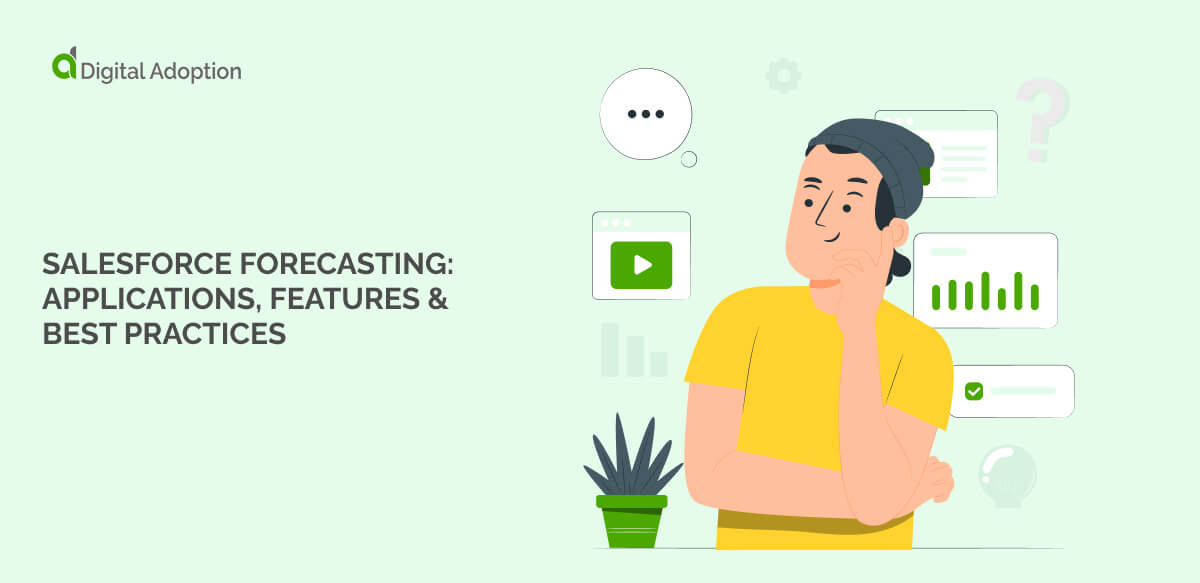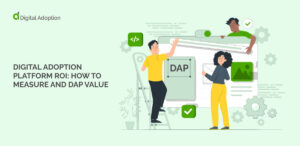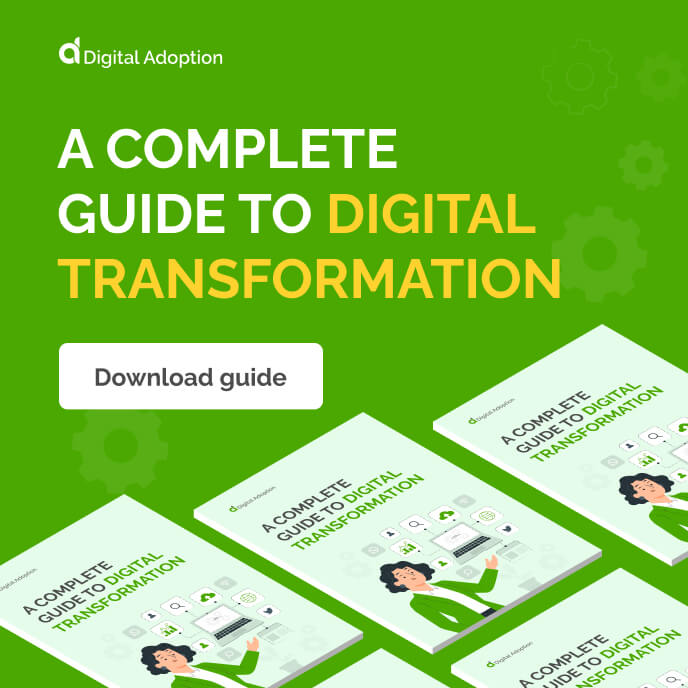Anticipating future customer and market demands can seem like a daunting task, considering the numerous components that need to be considered.
Luckily, Salesforce forecasting enables sales teams to leverage their CRM platform, transforming raw pipeline data into actionable insights that expose patterns that static reports can’t capture.
Successful Salesforce implementation, however, depends on clear objectives, disciplined configuration, and a strong user adoption strategy from the jump.
Used properly, Salesforce forecasting drives better conversations and sharper focus across teams. Instead of guessing where revenue will land, leaders get a data-backed view of what’s shaping it.
This article explores how Salesforce forecasting works, its applications, and the practical steps, features, and habits required to set it up properly and achieve consistent results.
- What is Salesforce forecasting?
- What is Salesforce forecasting used for?
- How does Salesforce forecasting work?
- What key features are included within Salesforce forecasting?
- How to set up Salesforce forecasting?
- What are the best practices for optimizing forecasts?
- Making Salesforce forecasting work long-term
- People Also Ask
What is Salesforce forecasting?
Salesforce forecasting provides a real-time view of expected revenue based on current pipeline data, representative activity, and deal stages.
It replaces static and often outdated reports with live insights that update as deals evolve. Sales leaders can track performance by team, region, or product, and adjust targets based on actual pipeline movement.
For example, if a representative repeatedly pushes high-value deals into the next quarter, the system flags it, automatically reducing the forecast amount. This prevents overestimating revenue and surfaces execution issues early.
Businesses are utilising Salesforce forecasting to reflect the current progress of deals. This means greater visibility into pipeline health, fewer surprises at quarter’s end, and faster reactions when deals stall or slip.
What is Salesforce forecasting used for?
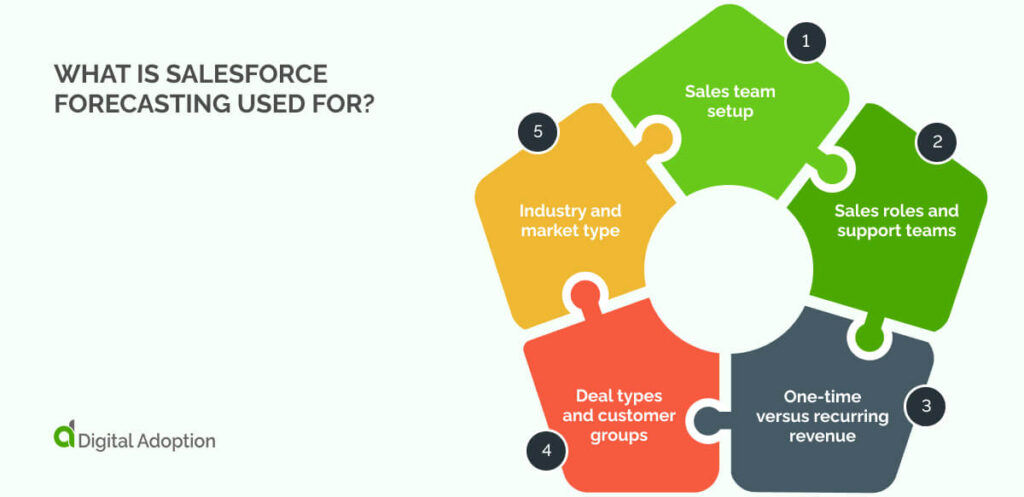
Forecasting in Salesforce involves understanding how deals are moving, where risk sits, and how sales teams are performing in real-time. It gives companies a prediction of what’s likely to close by rooting insights in actual pipeline activity.
Let’s take a closer look at what Salesforce forecasting is used for:
Sales team setup
Revenue targets are clearer when Salesforce forecasting breaks down results by teams or individuals. Whether sales units operate by geography or specialization, the tool highlights which groups are performing over or under expectations. This visibility guides leadership in fine-tuning team structure and prioritizing coaching where it’s needed most.
Sales roles and support teams
Tracking deal progress requires recognizing the different impacts of sales representatives versus support functions, such as sales engineers or customer success. Salesforce forecasting reveals how each role contributes to the movement of the pipeline. This enables managers to identify where handoffs or collaboration may slow momentum and adjust team workflows accordingly.
One-time versus recurring revenue
Differentiating revenue streams helps sales leaders understand financial stability. One-off deals deliver immediate cash, but recurring revenue builds predictable growth. Salesforce forecasting separates these streams, offering clarity on when renewals or contract expansions will influence overall results.
Deal types and customer groups
Not all deals carry equal weight or risk. Segmenting forecast data by deal characteristics and customer profiles uncovers which opportunities are more likely to close or require additional support. This insight allows sales teams to prioritize resources on the most promising markets and tailor their strategy based on buyer behavior.
Industry and market type
Sales operations vary significantly between industries, influenced by regulation, seasonality, and economic factors. Salesforce forecasting incorporates these nuances, adjusting expectations to reflect market realities. As a result, revenue projections align more closely with external conditions. This means companies avoid surprises caused by industry-specific fluctuations.
How does Salesforce forecasting work?
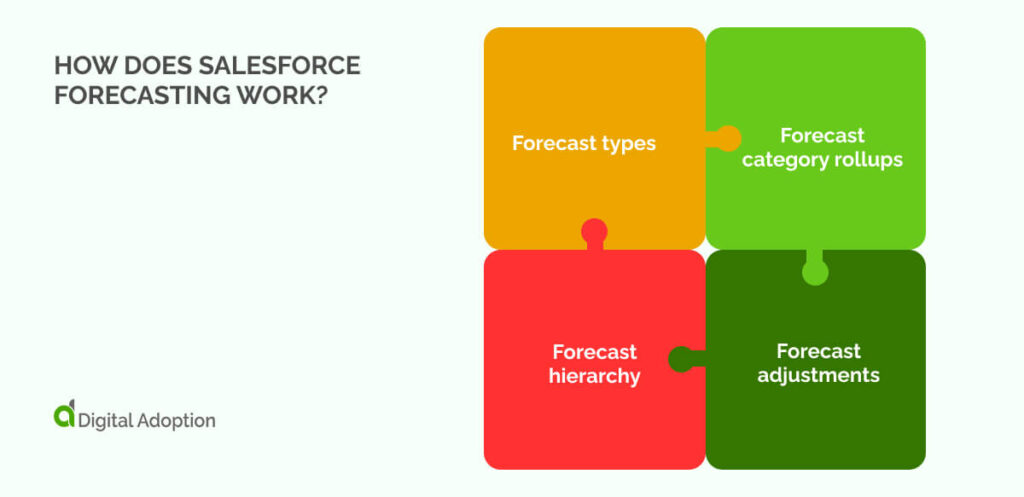
Salesforce forecasting operates by organizing sales data into structured segments, providing precise and adaptable outlooks on future revenue.
Let’s take a closer look at how Salesforce forecasting works:
Forecast types
Forecast types define what is being predicted and how those numbers accumulate. They set the foundation for what sales data appears in reports.
| Forecast types | Description |
| Object | Allows selection of opportunities, product lines, or revenue splits to match the forecast to the sales model’s complexity. |
| Specific measure | Determines the metric being tracked (e.g., revenue or quantity), enabling forecasts beyond total deal value. |
| Date type | Controls which date drives the forecast (e.g., close date or custom dates like payment schedules for accurate revenue timing). |
| Hierarchy | Determines forecast structure by user roles or territories, allowing for consolidated views or team/regional breakdowns. |
| Filters | Segments forecasts by criteria (e.g., new business vs. renewals), allowing for focused pipeline analysis. |
Forecast category rollups
Forecast category rollups group deals into buckets based on certainty. They compile values from multiple forecast categories to present a multi-layered view of revenue forecasts. This includes everything from early-stage opportunities to closed deals.
| Forecast category rollups | Description |
| Pipeline | Early-stage deals with low probability of closing. |
| Best Case | Deals with a reasonable chance of closing, but not guaranteed. |
| Most-Likely | Deals expected to close based on current sales insights. |
| Commit | Deals confidently forecasted to close within the period. |
| Closed | Successfully finalized and won deals. |
| Omitted | Deals excluded from forecasts due to high uncertainty. |
| Open Pipeline | All deals in categories beyond Commit, representing potential but less certain revenue. |
Forecast hierarchy
Forecast hierarchy defines who can view and adjust forecasts across the organization, supporting accountability and transparency.
It organizes forecast data by roles or territories, allowing leaders to view consolidated results while enabling team members to manage their own projections.
Forecast adjustments
Forecast adjustments enable manual changes to numbers, helping to reflect external factors or market realities that are not captured by data alone.
Together, these components enable Salesforce forecasting to provide a detailed and actionable projection of revenue.
What key features are included within Salesforce forecasting?
Salesforce forecasting can be complex, so understanding its key features is essential to fully leverage its capabilities and generate accurate, actionable revenue predictions.
Let’s take a closer look at the key features of Salesforce forecasting:
AI trend analysis and risk detection
Built-in AI highlights shifts in deal patterns and raises alarms on perceived risks, such as stalled deals or last-minute stage changes. You get a heads-up when something looks off, helping managers step in early before missed targets become end-of-quarter surprises.
Tracking forecast accuracy over time
Salesforce tracks how your forecasts compare to actual results. This helps identify where your team tends to overestimate or play it safe. Over time, you develop a better understanding of how realistic your projections are and can refine them without second-guessing every number.
Forecast visualizations
Forecast data is shown in easy-to-read charts and summaries. You can instantly see trends, gaps, and changes across time or teams. Visuals make it even easier to spot problems and act quickly, without needing a financial background or custom report.
Creating custom forecast pages (via the Lightning App Builder)
With the Lightning App Builder, you can design custom forecast pages that match your sales discovery process. Drag and drop components to focus on what matters, whether that’s product splits, filters, or rep performance. It’s flexible, so you’re not stuck using a one-size-fits-all layout.
What-if scenario planning for testing different sales outcomes
You can test different sales outcomes without changing your actual numbers. Scenario planning tools allow you to experiment with those variables and see how they impact your forecast before reality dictates the outcome.
Powerful user interface (UI)
Salesforce forecasting provides a streamlined, interactive workspace where teams can easily view and adjust forecasts. You can quickly switch views, filter by team or product, and see updates in real-time. It’s built for usability, so managers aren’t stuck digging through spreadsheets or disconnected Salesforce dashboards.
How to set up Salesforce forecasting?
Setting up Salesforce forecasting correctly makes a significant difference in the accuracy and usefulness of your forecasts.
Configured correctly, it gives your sales team clarity that helps them focus on the right deals and plan with confidence.
Here’s how to set it up in Salesforce:
- Activate forecasting
Go to Setup > Feature Settings > Sales > Forecasts > Forecast Settings. Enable forecasting to open up all the right tools.
- Set the forecast hierarchy and give access
Choose who can see and manage forecasts. Establish a hierarchy that clearly indicates who reports to whom. This controls how forecasts roll up.
- Pick what to forecast
Choose your forecast type. You can track revenue, product units, or a custom number. Select the object (such as opportunities) and choose the date field.
- Choose timeframes and set your currency
Decide if you want to track forecasts by month or quarter. Set the main currency so that amounts display correctly.
- Turn on quotas and set adjustment rules
Quotas help measure if reps are meeting targets. Let managers adjust forecasts if needed. That gives them room to use their judgment.
- Choose a rollup style
Choose between cumulative rollups, which add values across categories (e.g., Closed + Commit), or individual rollups, which display each forecast category separately.
- Add forecasts to your Lightning apps
Use the Lightning App Builder to place forecast tools where your team can see them. Build views that show the right info at a glance.
What are the best practices for optimizing forecasts?
All the Salesforce knowledge in the world won’t make a difference if best practices aren’t in place.
Let’s take a more in-depth look at best practices in Salesforce for optimizing forecasts:
Keep CRM data accurate and up to date
A forecast is only as good as the data behind it. Ensure that representatives update deal stages, amounts, and close dates regularly to maintain accurate records. Incomplete or outdated CRM information skews the numbers and leads to misinformed decisions at every level of the pipeline.
Create a clear hierarchy with defined responsibilities
Define who’s responsible for forecasts at each level, whether that’s team leads, regional heads, or product owners. A clear hierarchy avoids confusion, reduces duplication, and ensures that everyone knows exactly what they’re accountable for in the forecast.
Consider all factors that affect your forecast
Consider factors such as sales cycles, customer continuity, user retention, billing schedules, and external events. Ignoring these distorts the forecast. The more context you include, the closer your numbers reflect the data.
Set regular weekly, monthly, and quarterly check-ins
A good rhythm of short-term and long-term check-ins helps spot risks early and course-correct as needed. Weekly meetings are well-suited for addressing near-term shifts, while monthly and quarterly sessions are more effective for examining broader trends and strategic recalibration.
Automate tracking of sales activities
Use Salesforce automation to log emails, calls, and meeting outcomes. Manual tracking leads to gaps and uncertainties. Automation keeps activity data flowing into the forecast without burdening reps, and helps managers track deal progress without needing to chase updates.
Turn on historical trending to track changes over time
Instead of relying only on today’s numbers, you can compare past forecasts to actual outcomes and spot shifts in behavior. It shows where patterns are improving or falling apart over time.
Match sales stages with forecast categories
Forecasts become more useful when your sales stages line up with forecast categories. If early-stage deals continue to inflate your pipeline, revisit how those stages are mapped. The goal is to reflect actual likelihood in each forecast view.
Making Salesforce forecasting work long-term
Salesforce forecasting tools are one of the most effective ways for businesses to track and predict revenue currently.
When leveraged properly, it becomes a decisive digital tool that informs sales strategy, resource planning, performance, and innovation management.
However, forecasting in Salesforce comes with a somewhat challenging learning curve, and without a solid understanding of its structure and logic, it’s easy to misread the numbers.
The system relies on accurate data, unambiguous processes, and a clear forecasting hierarchy to function as intended. Knowing how to grasp Salesforce forecasting fundamentals sets the stage for sustained success and turns your CRM into a trusted source of truth.
For teams that want reliable forecasts quarter after quarter, building forecasting literacy is essential for maximizing the value of Salesforce’s platform.
People Also Ask
-
How is AI and automation being used in Salesforce forecasting?AI in Salesforce forecasting highlights patterns in rep behavior, deal movement, and pipeline changes. It preempts risks, such as pushed close dates or deal inactivity, while automation keeps activity data up to date without requiring manual inputs. Together, they help sales teams respond more quickly and forecast with greater confidence.
-
How accurate are sales forecasts?Forecast accuracy depends on the quality of your data, the alignment of your stages with outcomes, and the consistency with which your team updates records. With disciplined inputs and regular reviews, Salesforce forecasting can come within 5–10% of actual results; however, it breaks down quickly without these habits in place.
-
Why is sales forecasting with a CRM better?CRM-based forecasting pulls directly from live pipeline data, giving you a real-time view of how deals are moving. Unlike spreadsheets or static reports, Salesforce forecasting updates automatically, captures activity trends, and reflects real selling conditions, making it more reliable and less prone to blind spots or guesswork.

